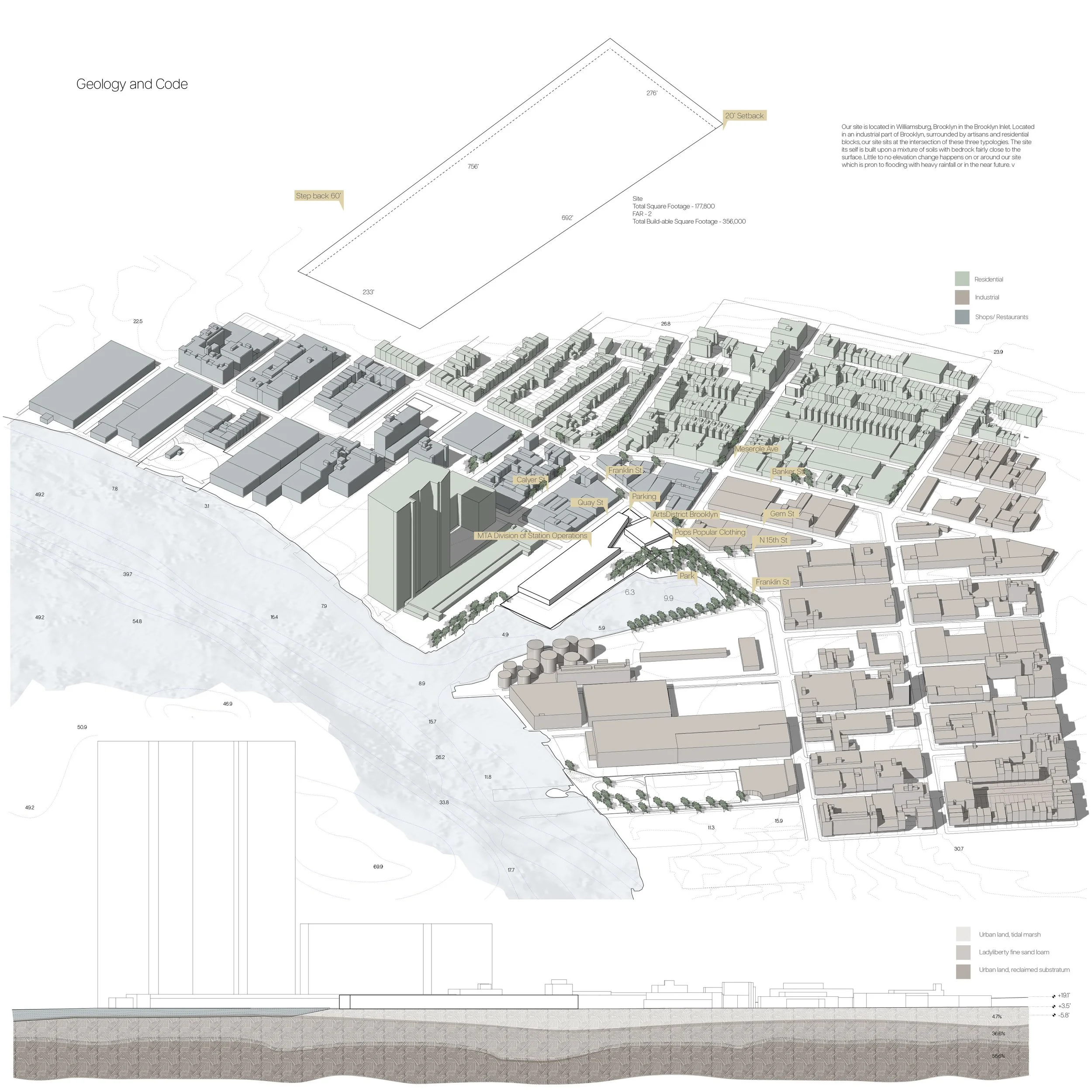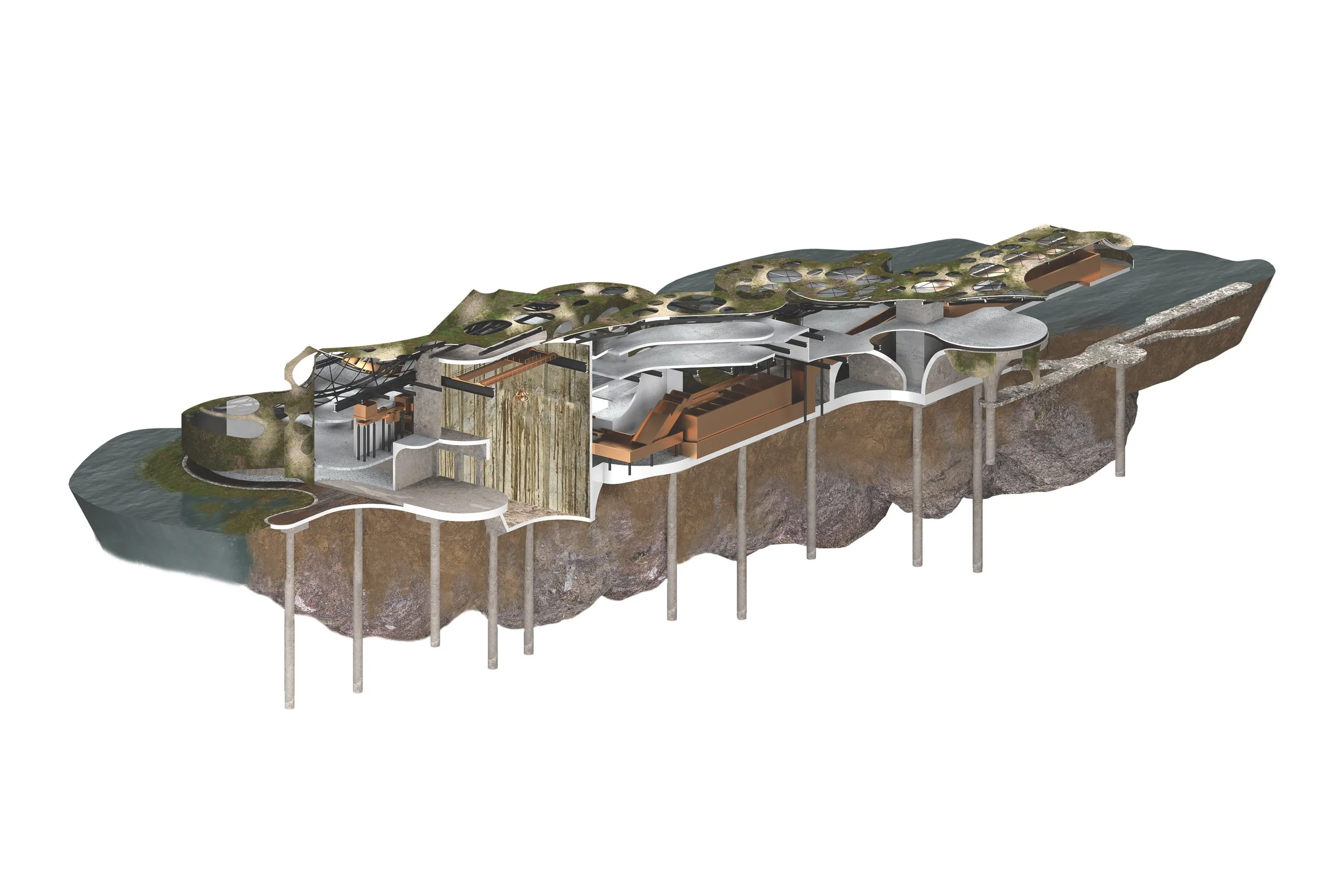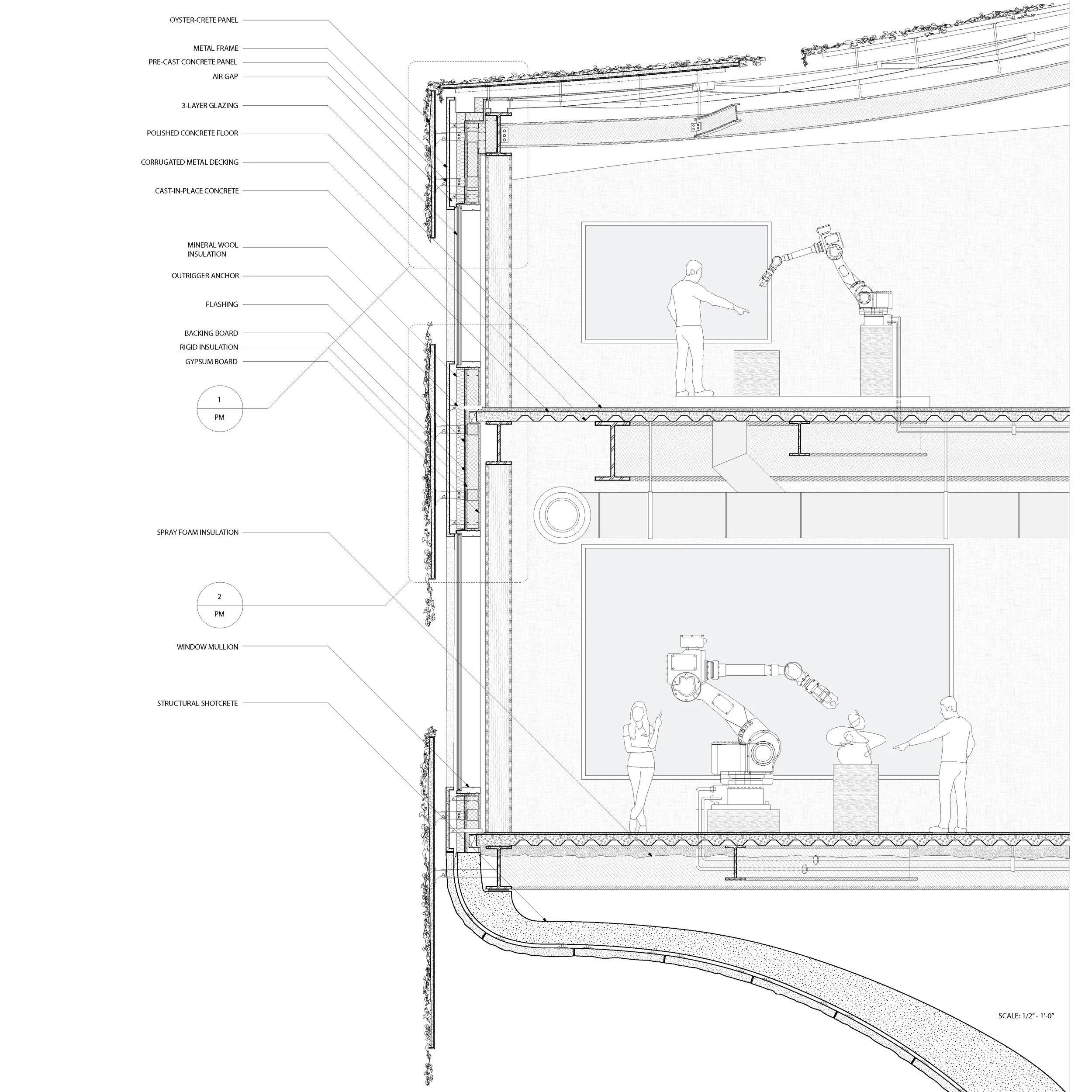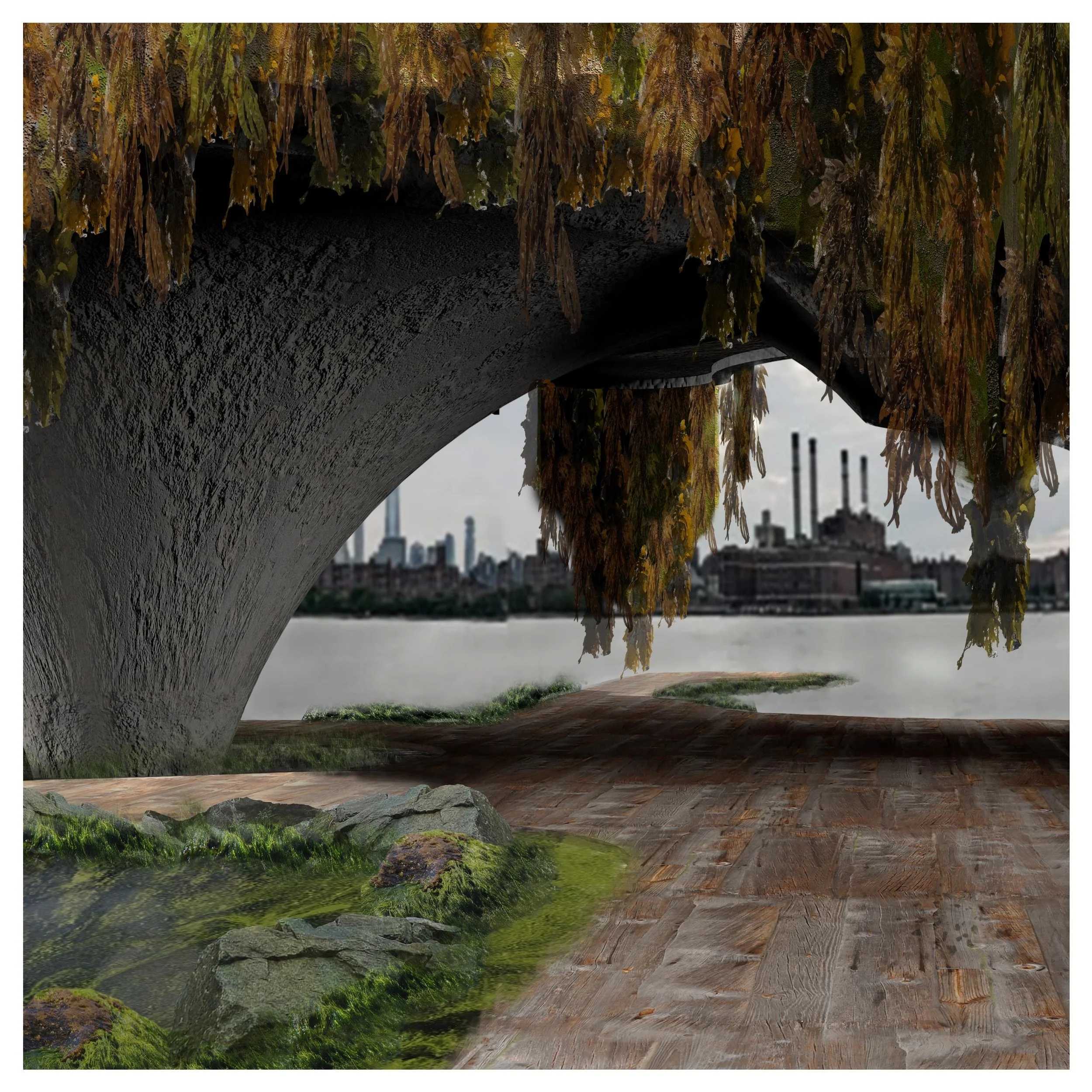Biomechanoid
Pratt Institute | Spring 2023
Location: Brooklyn, New York
Studio 602 - William Antozzi
In Collaboration with Matthew Huckenpoehler
Inspired by the ecologies of the East River discovered in our site research, this concept utilizes formal inspiration from local ecologies. Oysters serve as the ethos and main guiding principle of the design; they purify water and with the waste products, a pearl is produced. The design attempts to resolve the conflict between the normative mechanical figures of the WTE machines and the organic extremities by gradually transitioning from rectilinear joineries to curvilinear.
Final Jury: Charles Burke (Harvard GSD), David Jaubert (Harvard GSD), Quilian Riano (Pratt Institute),
Stephanie Bayard (Pratt Institute), Pinar Araci (Pratt Institute)
Present Local Flora & Fauna
Land Usage & Geology
Early Concept Diagram
Additionally, it approaches the stigma of both ecological and artificial waste and how it can be repurposed as an ingredient of creation while probing the dichotomy of waste and perception. One of the recurring themes of this project was designing around how we want waste to be perceived. Using the billion oyster project as a precedent, we utilize oysters, algae, and kelp









Exploratory Massing Studies
Further exploring the relationship between biology, nature, and architecture, the concept forms a mutualistic relationship between structure and the native ecologies. The art production facilities and laboratories consist structurally of oystercrete, steel and wood; and are intended, programmatically, for biomaterial experimentation and implementation. Oystercrete, as a material, acts as a substrate for the local ecologies to inhabit and populate with our structure acting as an abiotic addition to the bushwick inlet. Our facade typology consists of metal sheet panels on the machine side and kelp covered oystercrete panels on the inlet side. The oystercrete panels are porous where the aperture of the holes is dependent on its location on the facade and our initial solar study. On the machine side, there are also moments of glazing that follow the rectilinear shapes.
Diagram Series
West Elevation
Rendered Elevations
Site Plan
Our plans feature a shifting poche language that mirrors our exterior massing strategy. Program is laid out so that the different shops can utilize the waste products. Similar to an oysters role in the benthic ecosystem, our building acts as a postnatural biomechanoid as it receives waste, converts it into energy, and repurposes the byproducts.
Ground Plan
Second Plan
Third Plan
Long Section
Cross Section
Digital Chunk Model
½” Detail Drawing
3” Detail Drawings
Exterior Render

















